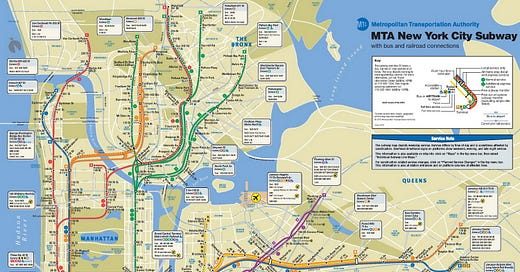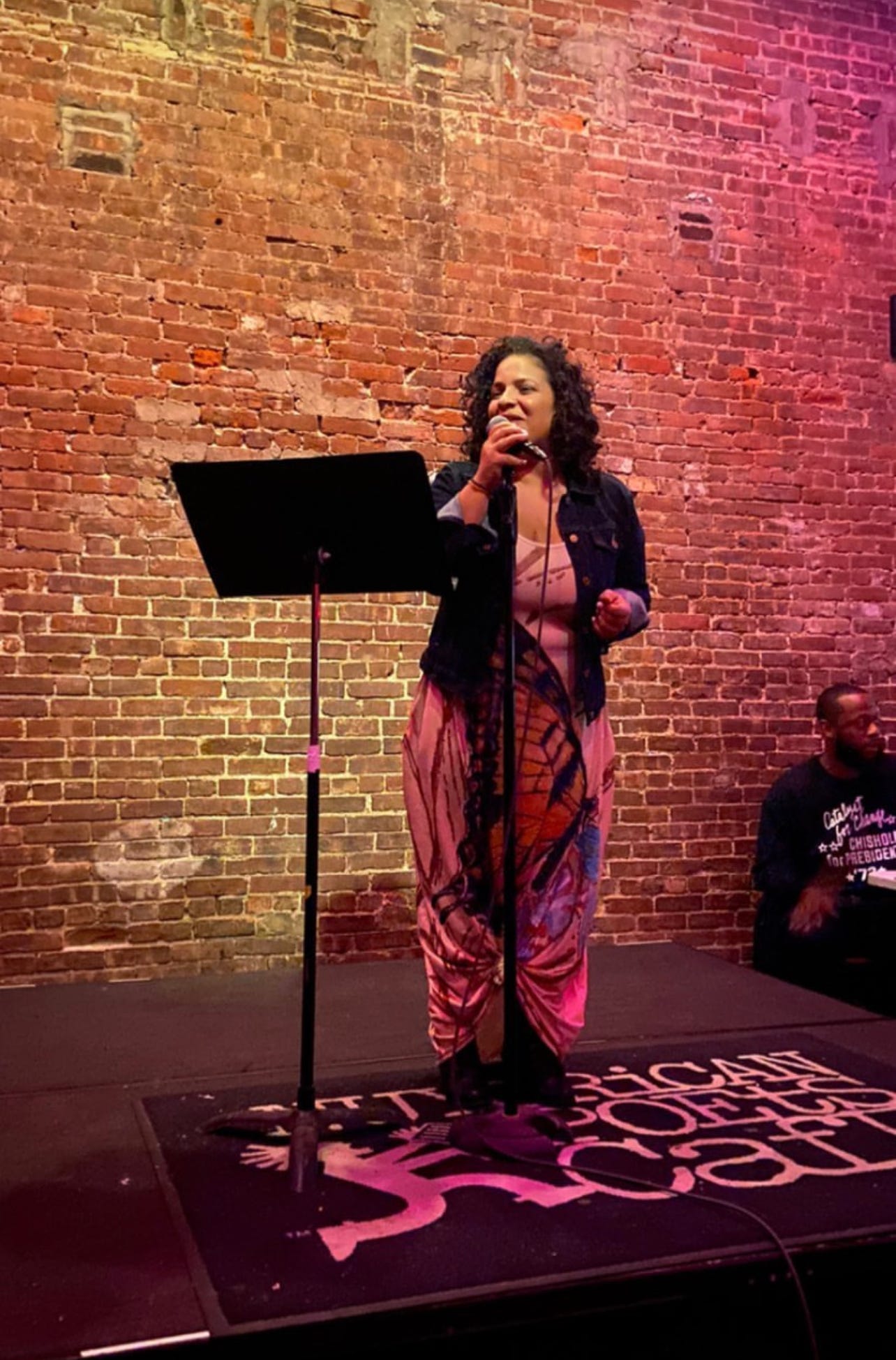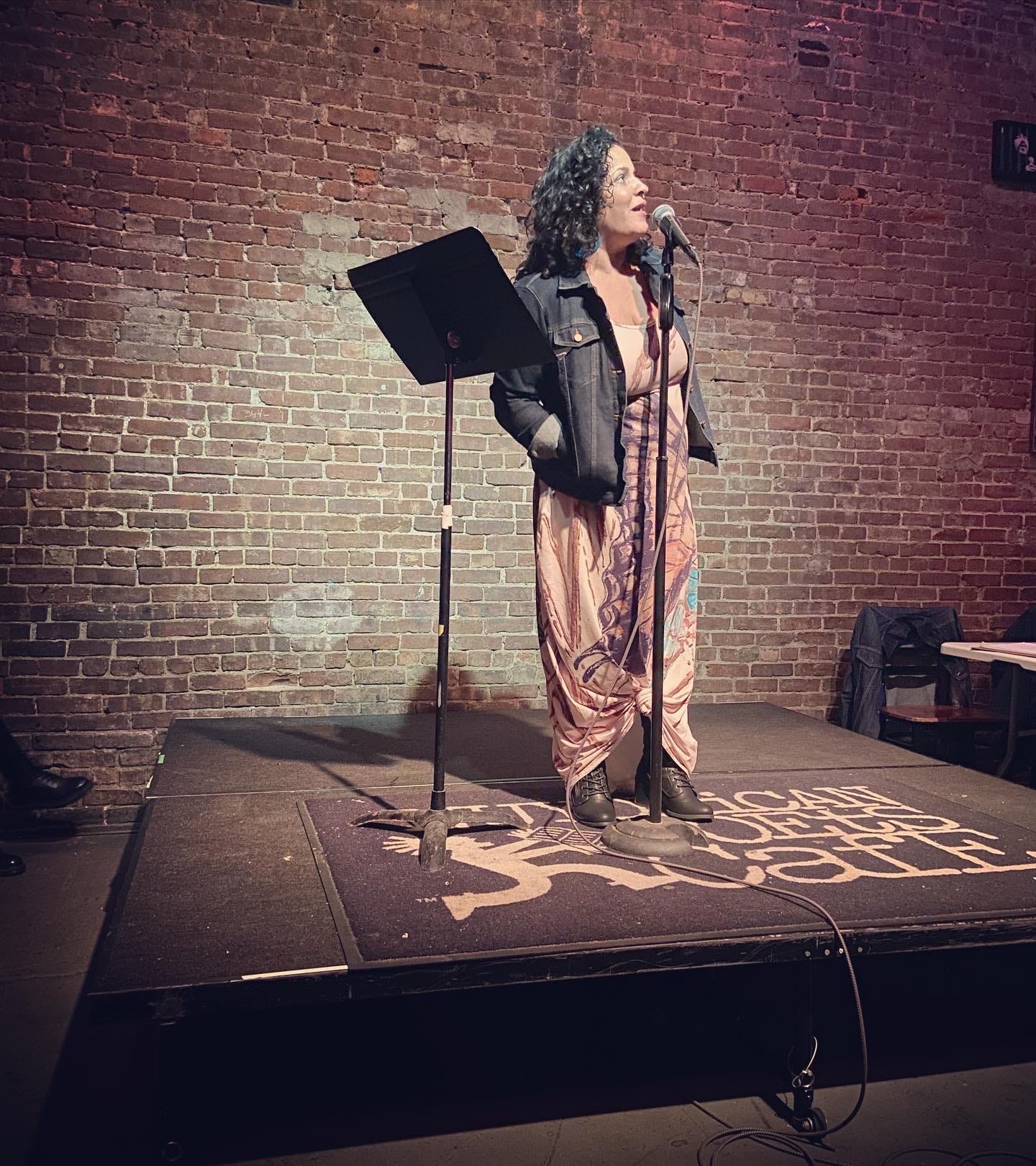For the love of storytelling, craft & word-hummingbirds
Experimenting with storytelling forms can introduce you to compelling, layered ways of telling your stories
I love to experiment when I write my stories. I recently shared an excerpt of what I envision as a google map essay.
To the right of me as I write this, on the wall next to my desk, is a NYC subway map. Pushpins dot the laminated poster, marking the places that remind me of my friend who I’m calling Dave.
Picture it. A google map essay of NYC, dotted with red pins at different junctures—175th & Audobon in Washington Heights, Palmetto Street & Evergreen Avenue in Bushwick. When you click on a pin, a short story appears about me and my friend Dave, that includes that specific destination. Dotted lines track rollerblade missions Dave & I took: Inwood Hill Park in upper Manhattan to 175th & Audobon, down to Purple Lights in Battery Park City, across town to the Brooklyn Bridge, through Greenpoint and BedStuy to Bushwick, and then in the reverse back to Inwood.
I needed something to contain the story of this friendship that shaped me in so many ways, of what Dave taught me about love and companionship, about how 15 years after surviving 9/11, Dave took his life in a terribly violent way I never thought him capable of…
I am writing a hermit crab essay.
I abandoned the traditional essay form a long time ago. I tried to write them for years, until I embraced my voice & storytelling style, & learned that there are many, more compelling ways to tell stories. I learned about lyric essays like hermit crab essays, braided essays and flash essays (someone online referred to them as word-hummingbirds and I am now smitten by the term, and, I confess, a little mad I didn’t come up with it).
I do not write chronological stories. My storytelling is not linear. I bounce around. I make connections, go on tangents, loop back around only jump to another place in time. I can do this without losing you, the reader, or at least that’s what I aim for (this usually takes some, often a lot, of revision).
I recently featured at the Nuyorican’s famed Friday Night Slam. I used to go to that slam when I was a baby writer and wish I could do what those poets did. This is the second time I feature, and it’s no less dope of an experience.
I didn’t feature at the Nuyo as a poet. I don’t call myself a poet, though my writing is poetic and melodic, but that’s a conversation for a different time. I am a storyteller who knows how to perform my work in front of an audience. I use the word perform deliberately because it is a performance. You have to embody your work, read with all your fire, love, grief, rage, heart. I understand this is a skill. Trust me, I’ve known incredible writers who just aren’t good at sharing their work aloud. I can because I learned it from the women in my family.
Have you ever listened to & watched women in the kitchen, preparing pasteles, calderos of habichuelas and rice, sharing stories of their lives, their loves, their pain, their vengeance and everything in between?
When I told my mother I am a writer, she told me she’d started writing her life story and pulled out a legal pad from the bookcase in her living room. The pages were full of her penmanship, the letters fat and crooked, her hand so heavy that when I ran my fingertips on the back of the page, it felt like braille.
My grandmother comes up with brilliant lines like: En mi vida, yo paraba tráfico.
My second mom Millie would grab her Kangol & say, “yo soy butch,” but the way she said it, it was like she was dancing salsa, but just with her shoulders.
These women braid stories, they use their entire bodies when they tell you a tale, they laugh, they tear up, they dance and shimmy. Millie was more likely to break into a two step while crooning a Frankie Ruiz song. My mother will break into scripture and prayer—“la bíblia dice…” There’s a look she gets in her eyes when she talks about her childhood in Honduras that I still don’t have the language for but recognize so well, I often know what she’s gonna say before she says it.
I tell stories they way they did, while they soaked banana leaves, made masa, mixed meat dripping in sofrito.
Some time ago, I wrote a hermit crab essay that’s also a braided essay using a soup recipe—Sopa Ministry for the Grieving and Unmothered. (The essay won the 2019 AWP Kurt Brown Award in Creative Nonfiction) It’s about grief, my strained relationship with my mother, how the ritual of making sopa helped me through my losses, especially the death of my Superman, my brother Juan Carlos.
(If you’re an avid soup maker and eater like me, read the essay.)
This is what you can do when you learn the many ways to experiment with form. You can combine and experiment and create and recreate ways to tell the stories of your life.
If you braid stories together, yours and your mother’s, your sister’s, your brother’s, etc. you’re experimenting.
If you’ve created an essay in the form of a list, or a recipe, like I did, you’ve experimented.
If you’ve jumped from one time period to another, and circled back, you’ve experimented.
Remembering how much I love to experiment inspired me to create a new series: Experimenting with Storytelling Forms. It begins on October 20th, with the Writing the Hermit Crab Essay.
In this class, we will be taking on the questions:
– What is the hermit crab essay?
– Why do writers use this form?
– How do writers use this form? (You’ll be given a list of model essays when you register.)
– Why is this form effective?
– How can you use this form in your story-telling?
When: October 20th, 7-9pm EST
Where: Online via Zoom
How much: $33 (if you can’t make this date, you can have one week of access to the private video recording for an additional $6, or $39)*
To register or ask questions: Send an email to writingourlivesworkshop@gmail.com
Experimenting with Storytelling Forms is a tuition-based series brought to you by Vanessa Mártir and the Writing Our Lives Workshop. The classes are scheduled for the third Thursday of the month, October to December, 7-9pm EST. The other classes in the series are:
– Writing the Braided Essay on November 17th, 7-9pm
– Writing Flash Nonfiction on December 15th, 7-9pm
* All classes are $33 for the live class, and $39 for access (for one week) to the private video-recording. You can take one class, two classes, or all three.
Let’s play and explore, and learn different ways to tell our stories!










